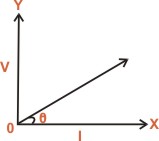| Ohm's Law |
|
|
The relationship between voltage across and current through a conductor was first
discovered by German Scientist George Simon Ohm. This relationship is called
Ohm's law. |
|
|
It states that the current (I) flowing through a conductor
is directly proportional to the potential difference (V) across
its ends provided the physical conditions do not change. |
|
|
i.e I ∞ V or V / I = Constant = R
|
|
|
Where R is a constant of proportionality and is called resistance of conductor. The unit of resistance is ohm.
|
|
|
If V is measured in volts and I in amperes, R is given in ohms.
|
|
|
For example, if the potential difference between points A and
B of the conductor is V and current flowing is I, then V / I
will be constant and equal to R, resistance of the conductor
between points A and B. If V is doubled up, current will also
be double up so that ratio V / I is constant. |
|
|
If a graph is drawn between applied potential difference (V)
and current (I) flowing through the conductor, it will be a
straight line passing through the origin. The slope of the graph
gives the resistance of the conductor ( tanθ = V / I =
R ). |
|
 |
|
|
Those conductors which obey ohm's law are called ohmic conductors. The ohm's law is true only for ohmic conductors.
|
|
|
If material is not ohmic, relation between V and I will not be linear so that R is not constant.
|